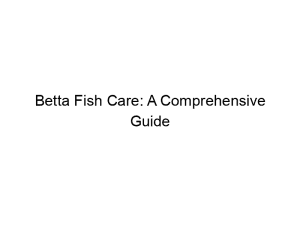Choosing the right aquarium for your fish is crucial for their health and well-being. A tank that’s too small will lead to stress, disease, and ultimately, death. Too large a tank, while not directly harmful, might be impractical or unnecessarily expensive. The Best Tank Size for Different Types of Fish isn’t a one-size-fits-all answer; it depends on several factors, including the species, their adult size, their temperament, and their activity levels. This comprehensive guide will walk you through everything you need to know to choose the perfect home for your aquatic friends. We’ll cover various fish species, tank size recommendations, and important considerations for a healthy aquarium environment. Let’s dive in!
Different fish species grow to vastly different sizes. A tiny neon tetra needs a
much smaller tank than a majestic Oscar. Always research the adult size of your chosen fish before purchasing, considering their growth rate. Overcrowding, even in the short term, can quickly stress fish, making them susceptible to disease.
Swimming Space and Activity Levels
Active fish like barbs need plenty of horizontal swimming space, whereas slower, bottom-dwelling fish may not require as much length. Consider the fish’s natural habitat – do they prefer open water or densely planted areas? The tank’s shape and layout should reflect their needs.
Tank Size Recommendations for Popular Fish Species
Small Fish (Under 2 Inches):
- Neon Tetras, Rasboras, Harlequins: A 10-gallon tank is generally suitable for a small school (6-8 fish) of these peaceful community fish. Smaller tanks can work for temporary setup or single fish, but not for long-term setups.
- Guppies, Platyfish, Mollies: While relatively small, these livebearers breed prolifically, requiring a 20-gallon tank or larger to accommodate a small colony. Overcrowding is the biggest problem with these species. Regular water changes are essential.
Medium-Sized Fish (2-6 Inches):
- Swordtails, Corydoras Catfish, Gouramis: These fish generally thrive in a 20-30 gallon tank. A larger tank gives more space for decorations and hiding places, reducing stress and improving their overall well-being.
- Rainbowfish, Cherry Barbs, Tiger Barbs: These semi-aggressive to aggressive species need enough space to avoid territorial conflicts. A 30-50 gallon tank is recommended, with proper plant selection, cave, and hiding places.
Large Fish (Over 6 Inches):
- Oscars, Flowerhorns, Arowanas: These large, often aggressive, species require significantly larger tanks, ranging from 55 gallons to several hundred gallons depending on the specific species. They need ample space to swim and establish territories.
- Plecostomus (Common Pleco): Though not aggressive, these catfish grow very large and need a tank of at least 75 gallons to properly thrive. Smaller tanks restrict their growth and negatively impact their quality of life.
Factors Beyond Fish Size: Community Tank Considerations
Compatibility and Temperament:
Choosing compatible fish is essential, especially in community tanks. Aggressive species should not be housed with smaller, docile fish. Thorough research on each species’ temperament is crucial to prevent bullying and stress.
Filtration and Water Changes:
A larger tank requires a more powerful filter to maintain water quality. Even with proper filtration, regular water changes are necessary to remove waste products. Failing to manage water quality leads to ammonia spikes, causing illness and death.
Aquascaping and Enrichment:
Providing suitable hiding places, plants, and decorations reduces stress and mimics the fish’s natural environment. This aspect is particularly important for shy or timid species.
Choosing the Right Tank Shape and Style
Tank Length vs. Height:
Horizontal tanks provide more swimming space for active fish, while taller tanks offer vertical space for climbing or territorial displays by some species.
Bowfront vs. Rectangular Tanks:
Bowfront tanks provide a wider viewing area but can make filtration slightly more challenging. Rectangular tanks offer a more simple and standardized setup.
All-in-One (AIO) vs. Traditional Tanks:
AIO tanks often include built-in filters and heaters, simplifying setup. Traditional tanks offer more flexibility in equipment choices but require more assembly.
Calculating Tank Capacity: Liters vs. Gallons
Understanding Metric Conversions:
Be mindful of metric and imperial measurements when purchasing a tank. It’s essential to accurately determine the tank’s volume to ensure adequate space for the fish. Proper conversions are crucial to avoid overcrowding.
Maintaining Water Quality: Essential Considerations
Filtration System Selection:
Choosing the right filter is key to maintaining water clarity and removing waste. Consider the tank size and the number of fish when selecting a filter. Over-filtration is generally preferable to under-filtration.
Water Changes and Maintenance:
Regular water changes remove accumulated waste and maintain a healthy environment. The frequency and percentage of water changed depends on the tank size, stocking levels, and the type of filtration used.
Testing Water Parameters:
Regularly testing ammonia, nitrite, and nitrate levels helps ensure the water is safe for the fish. This allows for proactive adjustments to maintain a healthy environment for your aquatic friends. Neglecting water quality is a major cause of fish disease and death.
Advanced Concepts: Bioload and Stocking Density
Understanding Bioload:
Bioload refers to the amount of waste produced by the fish in the tank. Higher bioload necessitates more powerful filtration and more frequent water changes. This is critical for successful aquarium maintenance.
Calculating Stocking Density:
Stocking density is a critical aspect of responsible fishkeeping. There are various formulas, but generally one inch of fish per gallon is a good rule of thumb. However, this is a general guideline and some species have higher space needs than others.
Common Mistakes to Avoid When Choosing Tank Size
Understocking vs. Overstocking:
Overstocking is the most common mistake. It stresses fish, leading to disease and death. Understocking can also be detrimental, as some fish prefer group living.
Ignoring Fish Growth:
Failing to consider a fish’s adult size is a major error. A seemingly suitable tank can quickly become overcrowded as fish grow.
Neglecting Water Quality:
Insufficient filtration and infrequent water changes lead to poor water quality, stressing and harming the fish.
Advanced Aquarium Setup: Specialized Needs
Species-Specific Requirements:
Certain species have unique environmental requirements. Researching these requirements is essential before purchasing the fish or the tank.
Specialized Filtration:
Some species, like those sensitive to ammonia or nitrates, might require more advanced filtration systems.
Troubleshooting and Problem-Solving
Signs of Overcrowding:
Increased aggression, lethargy, poor appetite, and fin-nipping are common signs of overcrowding. Addressing overcrowding immediately is crucial to prevent disease.
Addressing Water Quality Issues:
Water testing kits are inexpensive and essential tools to detect and address water quality issues before they become severe.
Frequently Asked Questions
What is the minimum tank size for a betta fish?
While some sources say a 5-gallon tank is the minimum, a larger tank (10 gallons or more) is strongly recommended for a betta’s well-being, providing more swimming space and enriching opportunities.
Can I keep multiple betta fish in the same tank?
No, male betta fish are highly territorial and aggressive towards one another. They should always be kept individually.
How much do tank sizes and maintenance cost?
The cost varies depending on the tank size and the equipment required. Larger tanks require more powerful filters, heaters, and more water for regular changes, impacting both setup and ongoing maintenance costs.
What are the benefits of a larger tank?
Larger tanks provide more space, making fish less stressed and less likely to develop diseases. They also offer a more stable environment for water parameters and allow for more creative aquascaping.
How often should I do water changes?
Water change frequency depends on tank size, stocking levels, and filtration. Generally, 25-50% water changes weekly are recommended for most setups. Proper maintenance schedules are crucial for overall success.
What are some common signs of a stressed fish?
Lethargy, loss of appetite, clamped fins, rapid gill movement, and unusual swimming patterns can indicate stress. These are indicators that require immediate attention to address the underlying causes.
How do I choose the right filter for my tank?
Filter selection depends on tank size and bioload (number and size of fish). Check the filter’s specifications to ensure it’s rated for your tank’s size and the number of fish you intend to keep.
What types of substrate are good for different fish?
Gravel, sand, and specialized substrates are available. Gravel is common but not suitable for all species, especially those who dig, such as catfish. Sand provides a softer, gentler substrate for many species.
Final Thoughts
Choosing the right tank size for your fish is a crucial step in responsible fishkeeping. Understanding the individual needs of your chosen species, considering their adult size, temperament, and activity levels, and providing adequate space and a stable environment are essential for their health, happiness, and longevity. Remember to always research thoroughly, avoid overcrowding, and prioritize water quality maintenance. A healthy and well-maintained aquarium will provide years of enjoyment, enriching your life and promoting the well-being of your aquatic companions. Start planning your perfect aquarium setup today and provide a happy and thriving home for your fish. Remember, the right tank size is an investment in their well-being, offering them the space they deserve to flourish.




